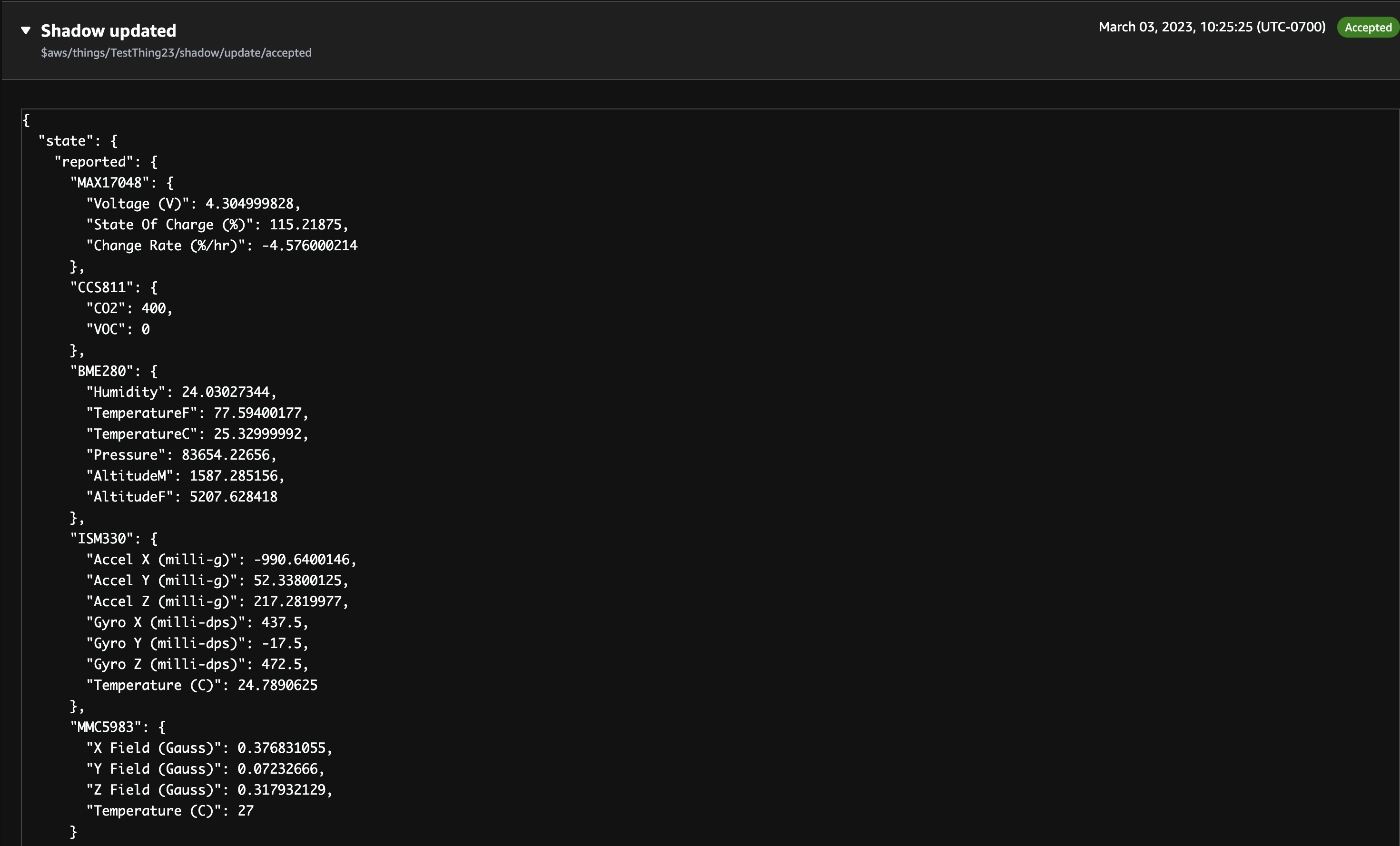 |
flux sdk
v01.02.02-5-g550ff88
Embedded C++ SDK
|
 |
flux sdk
v01.02.02-5-g550ff88
Embedded C++ SDK
|
One of the key features of the Flux Framework is it's simplified access to IoT service providers. This document outlines how an AWS IoT device is used by the Flux framework.
The following is covered by this document:
Currently, the AWS IoT device connection is a single direction - used to post data from the hardware to the IoT AWS Device via the AWS IoT devices shadow. Configuration information from AWS IoT to the framework is currently not implemented.
AWS IoT enables connectivity between an IoT / Edge device and the AWS Cloud Platform, implementing secure endpoints and device models within the AWs infrastructure. This infrastructure allows edge devices to post updates, status and state to the AWS infrastructure for analytics, monitoring and reporting.
In AWS IoT, an virtual representation of an actual device is created and referred to as a Thing. The virtual device/Thing is allocated a connection endpoint, security certificates and a device shadow - a JSON document used to persist, communicate and manage device state within AWS.
The actual IoT device communicates with it's AWS representation via a secure MQTT connection, posting JSON document payloads to a set of pre-defined topics. Updates are posted to the AWS IoT device shadow, which is then accessed within AWS for further process as defined by the users particular cloud implementation.
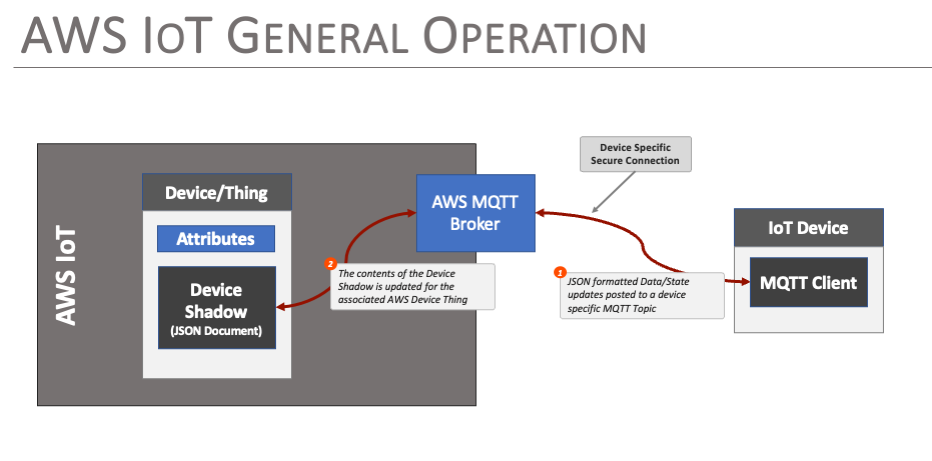
The following discussion outlines the basic steps taken to create a Thing in AWS IoT that the Flux Framework can connect to.
First step is to log into your AWS account and Select IoT Core from the menu of services.
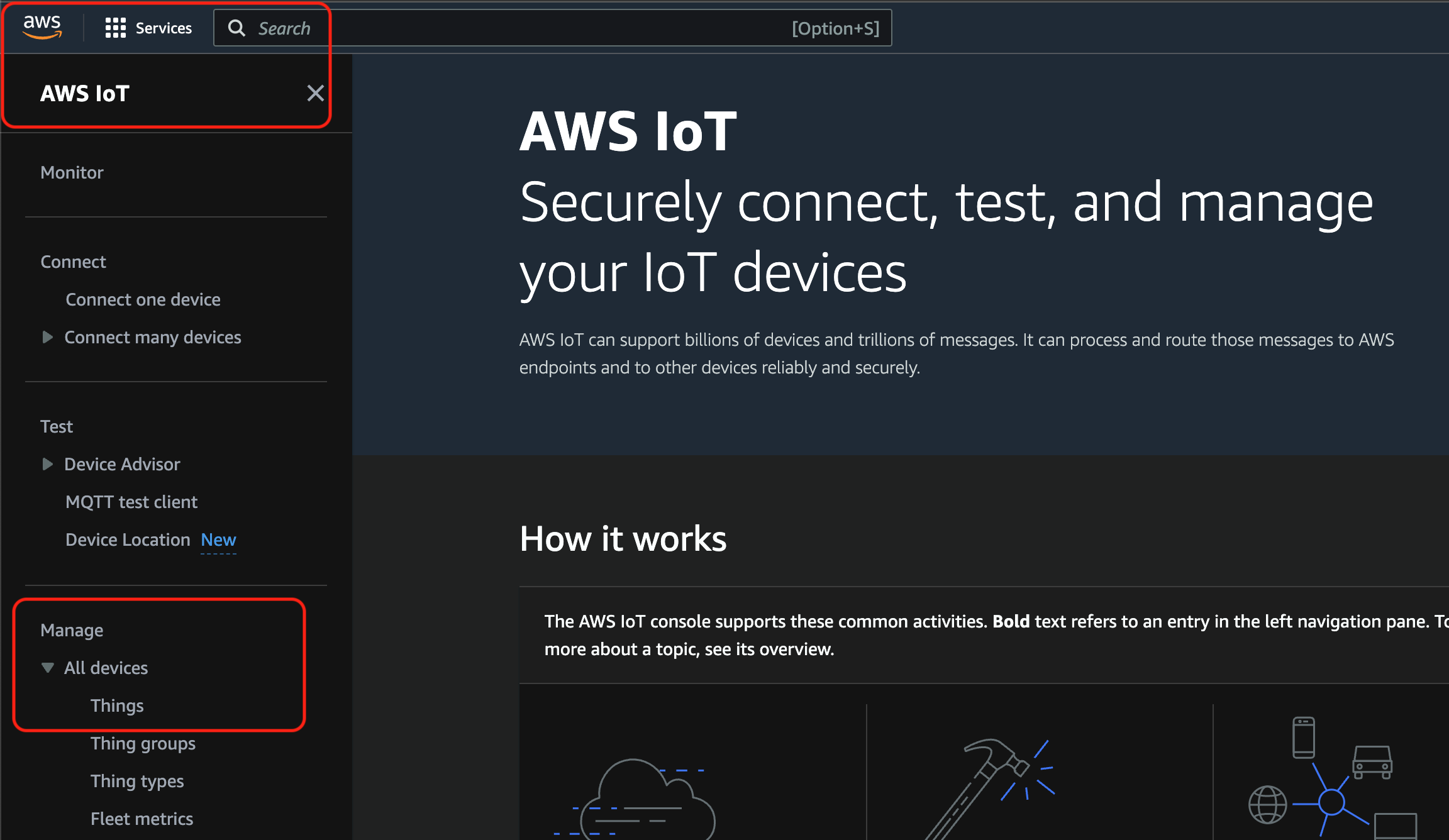
From the IoT Core console page, under the Manage section, select All Devices > Things
On the resultant Things Page, select the Create Things button.

AWS IoT will then take you through the steps to create a device. Selections made for a demo Thing are:
Upon creation, AWS IoT presents you with a list of downloadable certificates and keys. Some of these are only available at this step. The best option is to download everything presented - three of these are used by the Flux AWS IoT connector. The following should be downloaded:
At this point, the new AWS IoT thing is created and listed on the AWS IoT Things Console 
To write to the IoT device, a security policy that enables this is needed, and the policy needs to be assigned to the devices certificate.
To create a Policy, select the Manage > Security > Policies menu item from the left side menu of the AWS IoT panel. Once on this page, select the Create policy button to create a new policy.

When entering the policy, provide a name that fits your need. For this example the name NewThing23Policy is used. For the Policy document, you can manually enter the security entires, or enter them as a JSON document. The JSON document used for this example is:
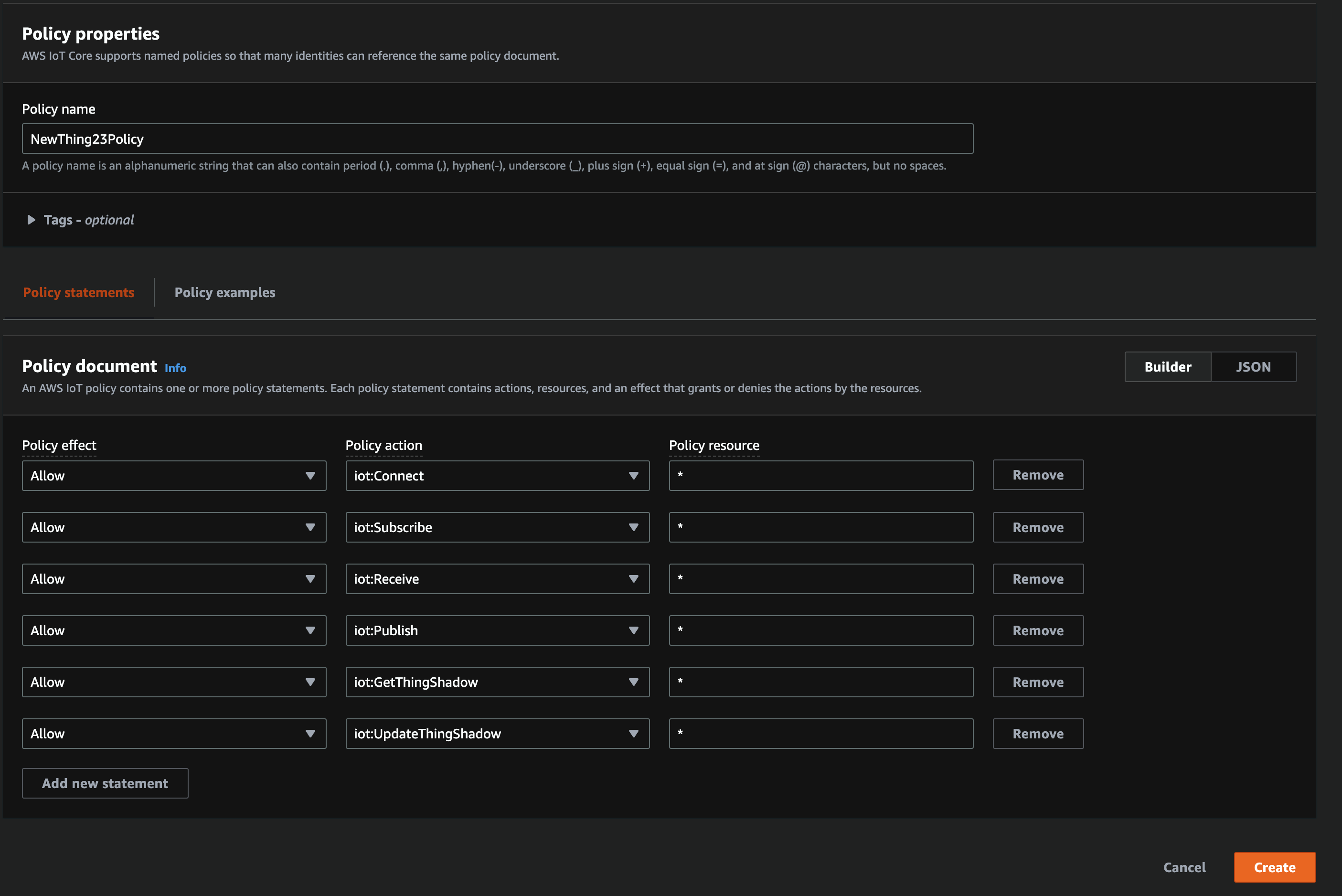
Once the policy is created, go back to the IoT Device/Thing created above and associate this policy to the device Certificate.

At this point, AWS IoT is ready for a device to connect and receive data.
To add an AWS IoT device as a destination for the output of a Flux Framework based system, the application being created needs the following:
For this example, we show out to connect the output of a data logger in the framework to the AWS IoT device.
First - add an AWS IoT framework to your object
During the setup of the framework - at initialization, the following steps finish the basic setup of the AWS object.
Once the Flux AWS IoT object is integrated into the application, the specifics for the AWS IoT Thing must be configured. This includes the following:
This value is obtained from the AWS IoT Device page for the created device. When on this page, select the Device Shadows tab, and then select the ***Classic Shadow** shadow, which is listed. 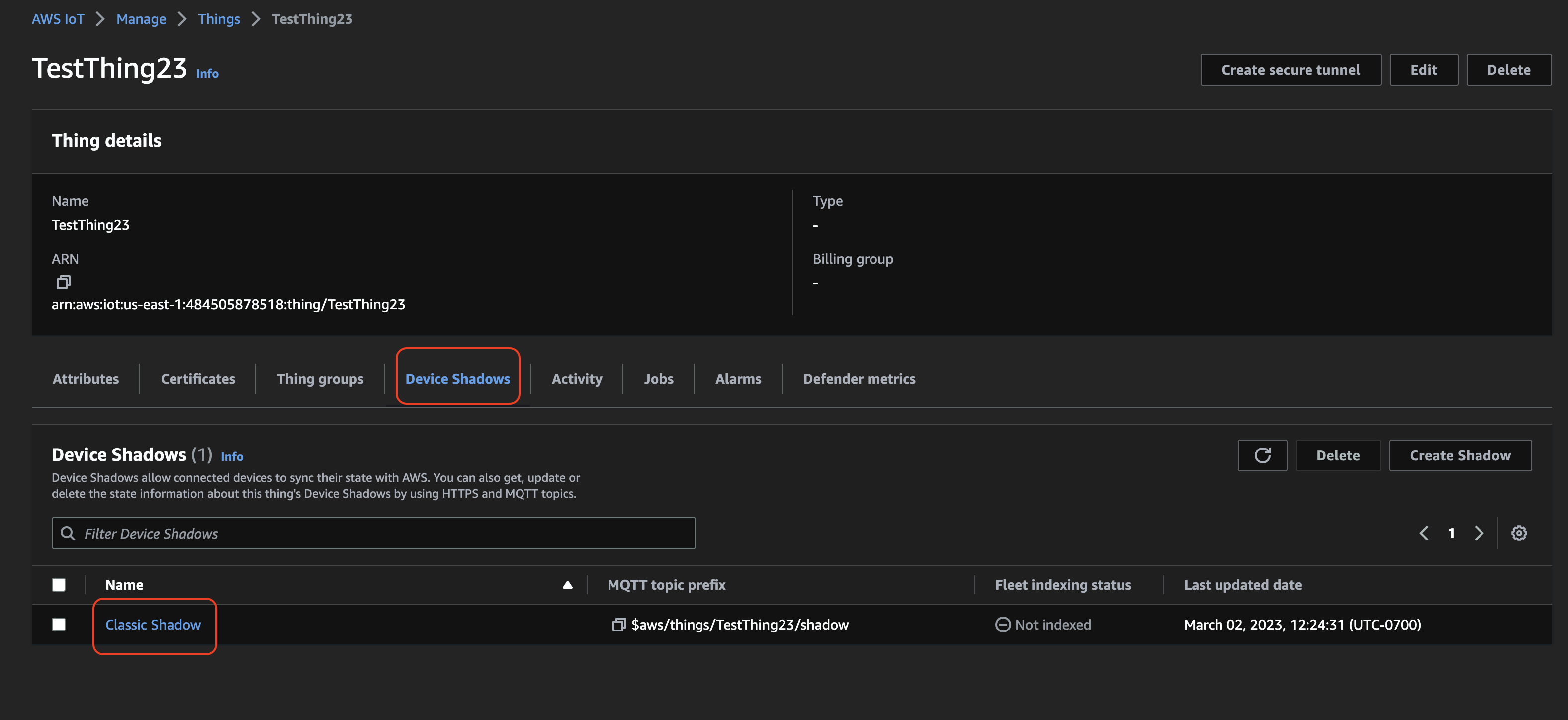
Selecting the ***Classic Shadow** entry provides the Server Name/Hostname for the device, as well as the MQTT topic for this device.

Note: The server name is obtained from the Device Shadow URL entry
The MQTT topic value is based uses the MQTT topic prefix from above, and has the value ***update** added to it. So for this example, the MQTT topic is:
Once the Flux-based device is configured and running, updates in AWS IoT are listed in the Activity tab of the devices page. For the test device in this document, this page looks like:
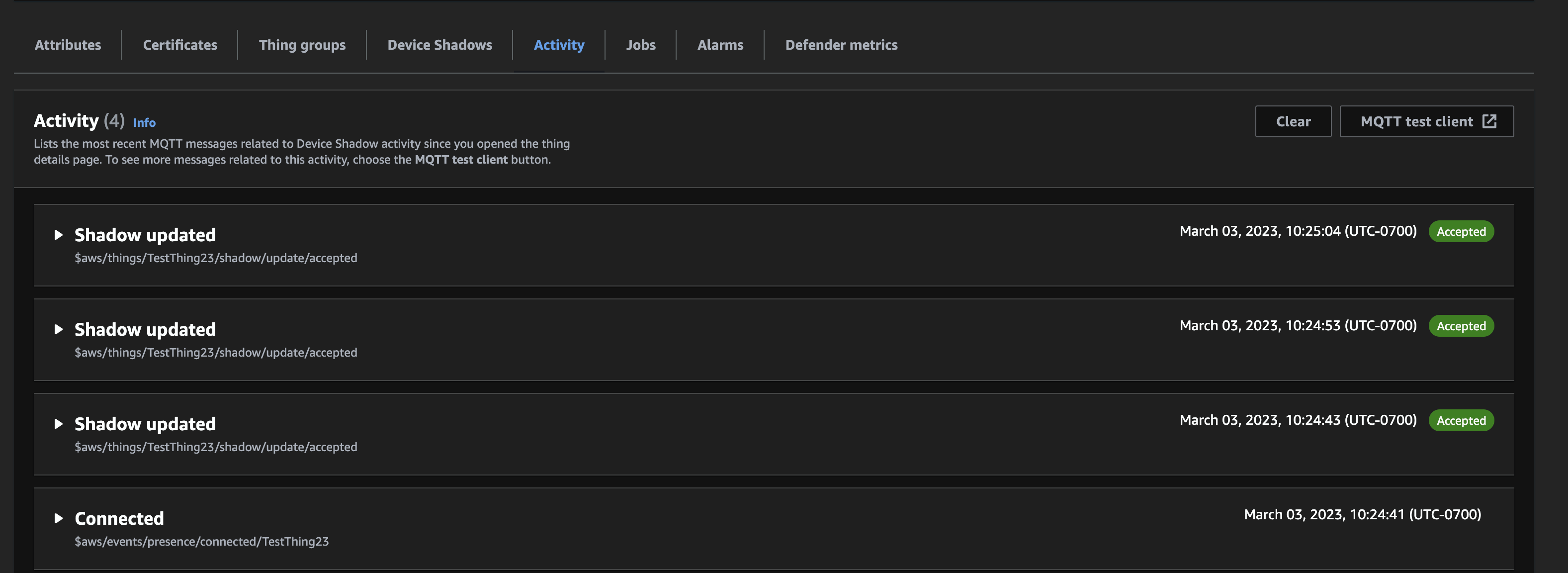
Opening up an update, you can see the data being set to AWS IoT in a JSON format.
